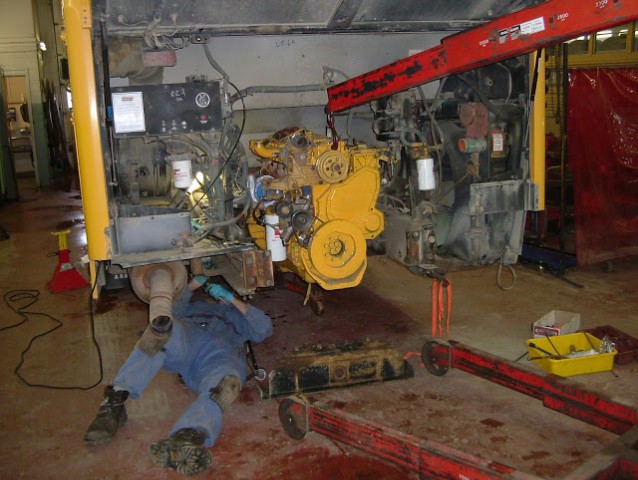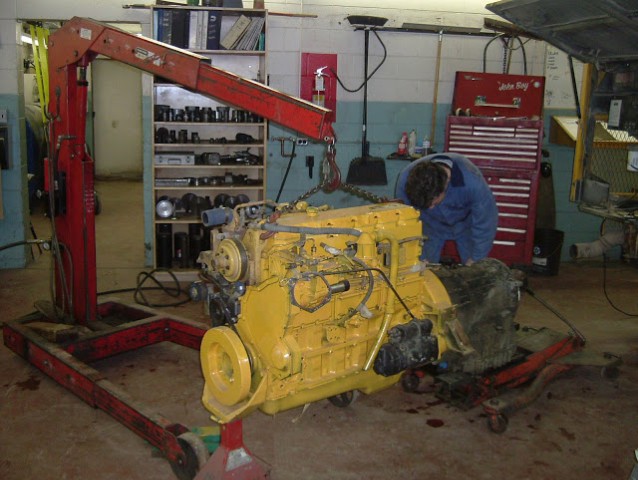Remembering The Cat 3116 Diesel Engine
It’s been a few months since we sold our last bus with a Cat 3116 diesel engine. They were a well built engine but their top end was weak. It was #5 exhaust valve that would blow up in the cylinder and make a big mess. Actually the valve stem would separate and the bottom half of the valve would bounce around and make major impressions on the piston and score the cylinder wall.

The head would need replacement of course. In most instances by the time the engine was shut down the damage was already done. Picture an engine running at around 2400 RPM and suddenly there’s a high velocity piece of metal pinging around inside. The major damage that would inflict is indescribable. Through the years we had to rebuild 3 of the 3116 engines in our fleet.
The block was a dry sleeve meaning the entire engine needed to be removed and disassembled for machining. It was a mystery why they built an engine without wet sleeves like most inline diesel engines. Cat did it anyways and perhaps did not expect this type of failure to happen. On the contrary it did happen because of the weak top end valve train assembly.

Valve failure would only occur during a high heat condition so climbing a good grade fully loaded was the main cause of this particular problem. There was only one intake valve and one exhaust valve which was another “head scratcher”. Most diesels employ 2 intake and 2 exhaust valves which would absorb the heat and load together. They ran in our Thomas bus pusher units with a transversely mounted engine fan. We had to install an over ride switch for the engine fan so the driver could manually keep the fan running up heavy grades to avoid over heating.
Another hurdle with the 3116 was setting up the top end. The valve adjustment was just the beginning. There was the fuel setting, timing and synchronization which required an extensive tool kit. Without these specific tools the adjustments could not be done. Dial indicators and a pre-calibration block forced shops like ours to purchase this kit. In total we owned 13 of these engines so it was worth it to be tooled up properly.
Not to say the 3116 was a lemon it just needed a lot of attention. It was important to keep the valves adjusted properly especially that #5 exhaust valve. A tight clearance could spell trouble. These engines are no longer in our fleet now and Cat has stopped producing engines for the truck market. They are focusing on construction and mining. If you still have a 3116 in your fleet leave a comment here or ask a question in the forum at mechanicshub.com. Thank you for stopping by.






